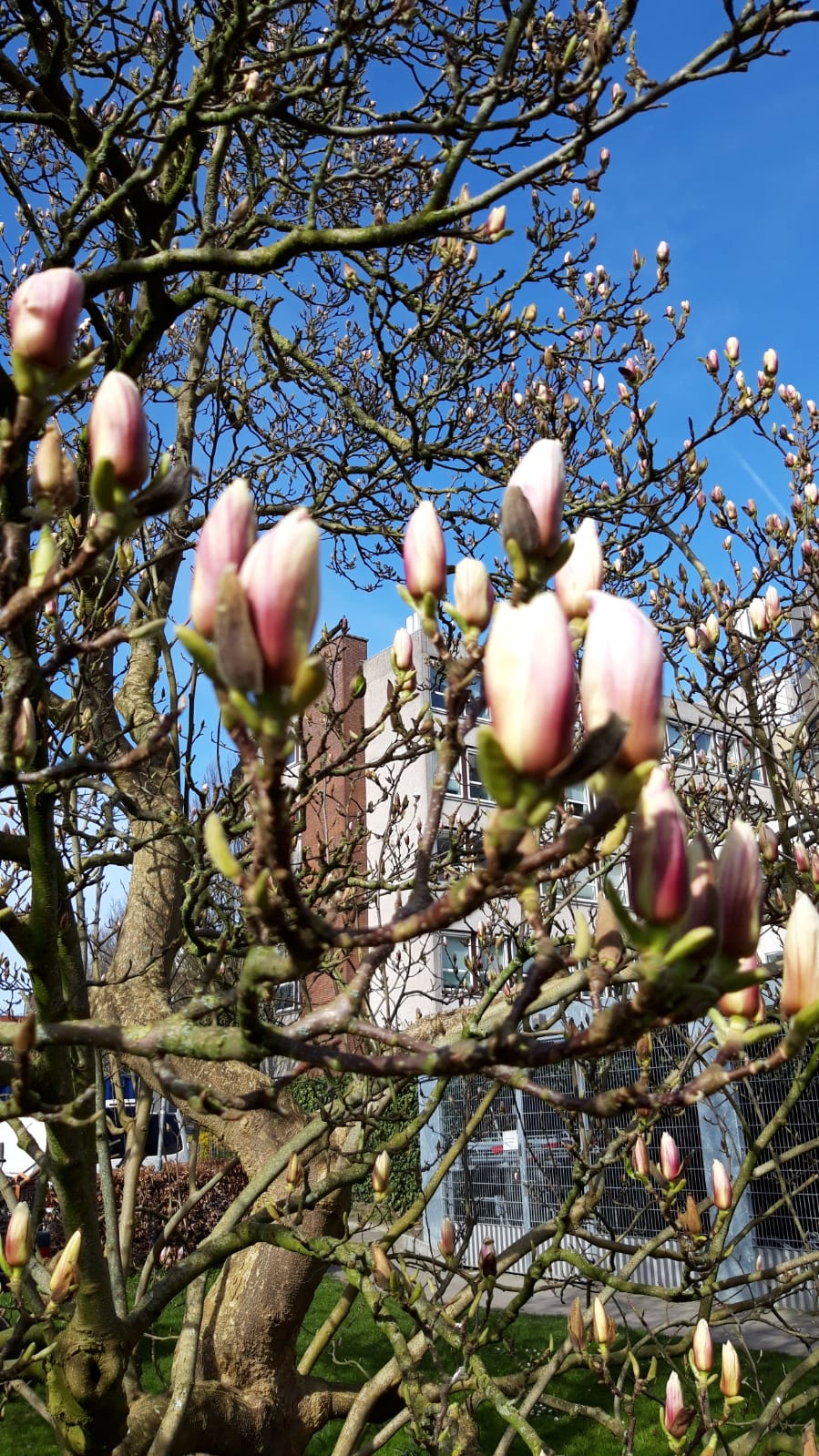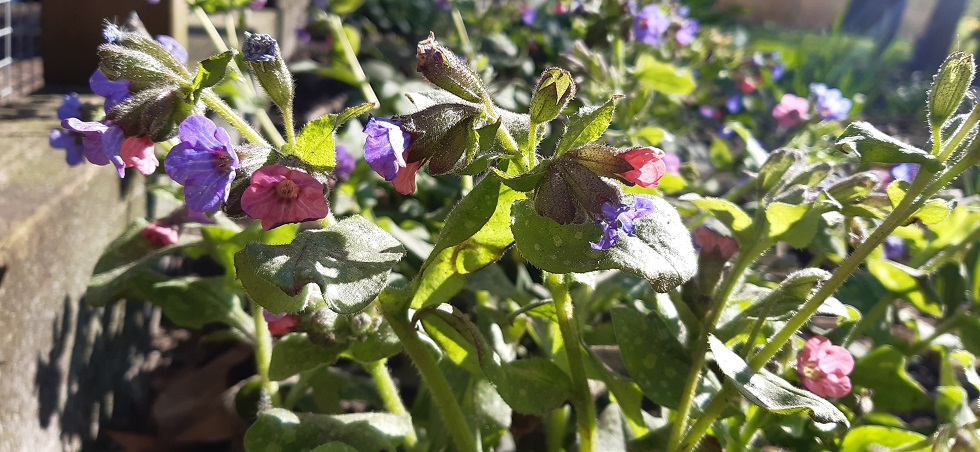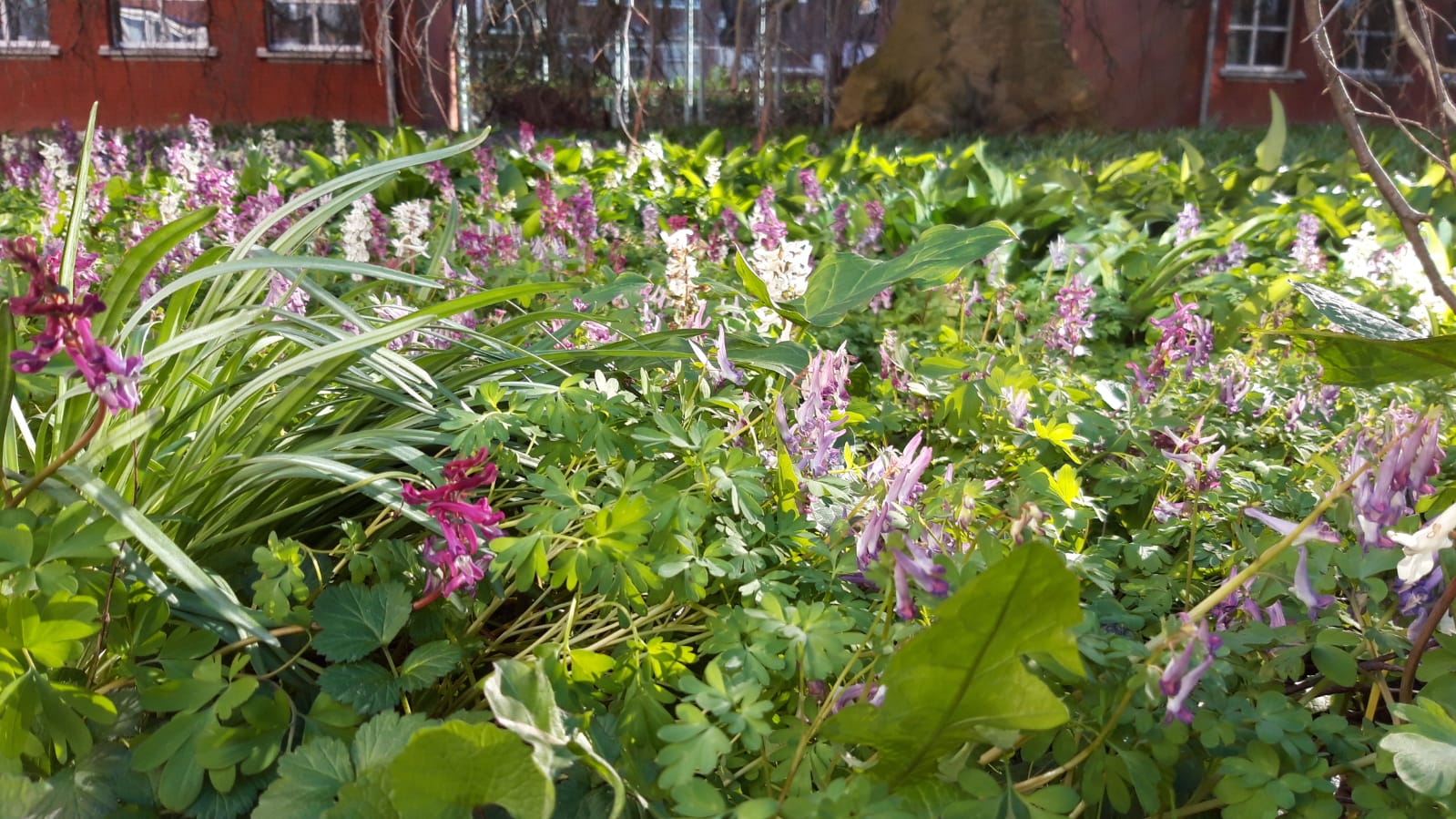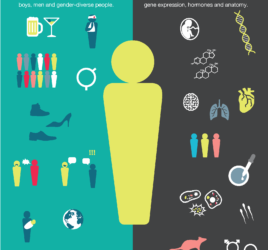It was the week in which the Board of the University announced that all university buildings would close because of the Corona outbreak.
—
Friday March 13, 2020, Oude hortus, Groningen
The “Falafel Friday” WhatsApp group that I share with my colleagues remains silent; no one in our group is present to share our favourite lunch.With everyone being absent, I silently eat my Falafel wrap sitting in our faculty garden: the “green heart” of the faculty (see my previous blog). I view the recently renovated fountain basin. Lungwort is flowering around it, with its happy purple and pink colours.
Lungwort (Longkruid in Dutch) is an early flowering herbaceous plant. Ironically (given that Corona affects the airways), it was thought early on to cure lung diseases because its spotty leaves resemble the lungs (picture taken from my own garden).
Few staff members are in the Heymans building to get their last things. And what do you think people are securing from their offices?
Books?!
Data?!
Wrong.
They are all rescuing their plants. Bags full of plants are carried out of the Heymans building. The leaves lying around on the stairs provide the evidence.
I give my own plants a good soak and lock the door. I know they will survive for some weeks; they are used to some neglect.
Before I leave the parking lot, I take a last look at the ancient Magnolia tree. Its buds are just about to crack open. Give it one week and the tree will look as spectacular as it does every year. Its white and soft-pink tulip-shaped flowers will be a feast for the eyes; if any eyes fall on them this year.
The ancient magnolia tree in the ‘Oude Hortus’ (this and the heading picture taken this week by our ‘lady gardener’).
Even without spectators, the green heart of our faculty lives on. Nature takes its own course. Just like the virus…
I drive home knowing that I will miss out on some spectacles in the garden; the green heart lives on.
—
Bird-in-a-bush (‘Vogeltje-op-de-kruk’ or ‘Vingerhelmbloem’ in Dutch) is one of the spectacles flowering in de Oude Hortus now. It’s name stems from the flowers that look like little birds (picture taken this week by our ‘lady gardener’).
Last weekend I realized that social distance can bring people closer to nature than ever. Where did people go when all organized events were cancelled?
Right!
Nature.
In spite of all government guidelines, large numbers of people were going out on the streets, in the parks, nature reserves, forests, and garden centres. They went out to find back human nature; to clear their heads, to burn their energy, to find connection, to feel alive!
The government guidelines have since become stricter. Nonetheless, as long as we keep social distance (1.5 meters), I think it is a helpful cure in these insecure times to go outside, enjoy the sunshine and celebrate the starting spring. Are you listening to your green heart?
What are you missing about faculty life today? Share it in the comments below.
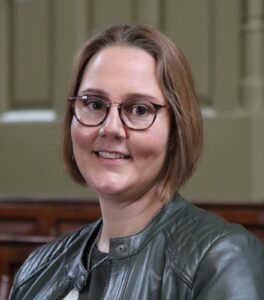
Dr. Yvonne Groen (she/her) is a bio/neuropsychologist with a clinical interest. She focuses on cognitive and emotional difficulties in people with the developmental disorders Attention Deficit Hyperactivity Disorder (ADHD) and Autism Spectrum Disorder (ASD). Specific areas of her studies are: social cognition and social skills, school neuropsychology, reward sensitivity and motivation.
Recent publications
Fuermaier, A. B. M., Groen, Y., Tucha, L., Weisbrod, M., Aschenbrenner, S., & Tucha, O. (2019). Everyday Life Attention Scale (ELAS): Normative data of n = 1,874 Dutch participants. Applied Neuropsychology. Adult. Doi:10.1080/23279095.2019.1605994
Sluiter, M. N., Groen, Y., de Jonge, P., & Tucha, O. (2019). Exploring neuropsychological effects of a self-monitoring intervention for ADHD-symptoms in school. Applied neuropsychology. Child. https://doi.org/10.1080/21622965.2019.1575218
Groen, Y., Fuermaier, A.B.M., Tucha, L., Weisbrod, M., Aschenbrenner, S., & Tucha, O. (2019): A situation-specific approach to measure attention in adults with ADHD: The everyday life attention scale (ELAS), Applied Neuropsychology: Adult, 26(5), 411-440. DOI 10.1080/23279095.2018.1437730
Groen, Y., Fuermaier, A.B.M., Tucha, L., Koerts, J., Tucha, O. (2018). How predictive are sex and empathizing–systemizing cognitive style for entry into the academic areas of social or physical sciences? Cognitive Processing, 19, 95–106. Doi:10.1007/s10339-017-0848-z
